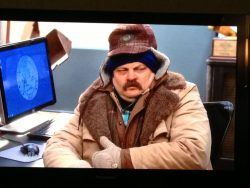Cold Spots In Your Home? Do This…
Do you find yourself wearing a sweater in some rooms of your house but just a t-shirt in other rooms of your house?
Or maybe you walk from one room, through a central room, to another part of the house and find that one spot is just a bit chillier.

These “cold spots” in your home are especially noticeable when the temperatures are cool — during fall, winter, and spring — but it’s possible in some areas that they may exist all year ’round.
So, what are “cold spots” in your home, anyway?
Your home’s HVAC system works on a simple premise: Air is drawn through vents (internal vents and/or external vents) and pushed into your furnace. From there, the air is warmed and then forced out through the ductwork in your walls, through vents, and into the rooms of your house.
But here’s the thing: air is invisible but it acts a lot like water: It flows in easy, meandering ways around a room, invisibly bouncing off of walls and furniture. In fact, if you could see the air flow from a vent, you’d notice that it moved and flowed from vents outward throughout the room but it stops and redirects when it hits an obstruction.
Therefore, some areas of your home may not get air flow. The air just sits there. And, depending on the air flow and air pressure in the house, the ambient temperature (and temperature fluctuations) inside your home and outside, as well as other factors, cold spots can be created. Simply put, warm air isn’t flowing there; it flows around or is stopped.
You may especially notice cold spots by windows or exterior doors (no surprise there) but you may also notice cold spots near exterior walls, which could indicate that the insulation has degraded slightly. Or, you may notice cold spots in unusually shaped rooms, or rooms where the HVAC ducts aren’t venting into the center of the room.
These are just a few of the reasons, and it really depends on a number of factors.
Fortunately, there are a few things you can do about it. If you want a simple, temporary solution, add a small fan nearby to circulate the air more effectively in the room. Another option, in rooms that are larger but not too unusually shaped, consider a ceiling-mounted fan.
However, some homeowners want more effective fixes for challenging cold spots, especially in hard-to-reach places. For these scenarios, you may consider installing extra vents to get the air flowing into that area.
There are other options of course but this is a great starting point.
Your home should be comfortable — you shouldn’t have to avoid one area of your home just because it’s colder than other areas!
If you notice cold spots in your home, there’s lots you can do about it so take a walk around your home and make note of all the cold spots… and see if you can’t transform them into comfortable warm areas!

